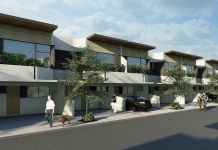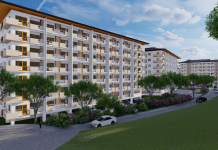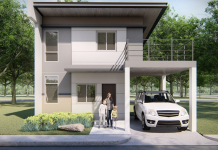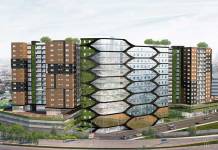
“Philippine property markets continue to thrive despite slower economic growth,” according to Julius Guevara, Director of Research and Advisory Services for Colliers International in the Philippines.
In its Q2 Research and Forecast Report, the real estate firm noted that commercial developments in the fringe areas punctuate record levels of upcoming office supply.
A total of around 580,000 sqm of new office space is expected to be delivered by the end of 2015. While around eight office buildings were expected to be completed in the second quarter in the major business districts, only two were delivered.
SM Prime continues to expand its office portfolio in the Manila Bay Area with the introduction of Five E-Com Center. With almost 75,000 sqm of net usable area, Five E-Com Center resulted in an increase of office stock of almost 38 percent in the reclamation area.
The newest building in SM’s E-Com complex is being taken up by what Colliers said is a good mix of both business process outsourcing (BPO) and traditional office tenants.
In Fort Bonifacio, Megaworld introduced its first office tower in its Uptown Bonifacio development, with approximately 27,000 sqm of net usable area. Uptown Bonifacio will host several high quality office buildings, including the Alliance Global Tower.
Encouraged by incessant demand from the BPO industry, developers are slated to construct unprecedented levels of office space in the various established and emerging business districts in the medium term.
If target office delivery dates are met, each year between 2015 and 2018, stock will surpass the previous record of new office supply.
Office stock in Fort Bonifacio is anticipated to double in the next three years, and the Manila Bay Area is set to expand by 140 percent in the same period. With the lack of developable land and prohibitive land prices in the established central business districts, growth is seen in the fringe areas and upcoming business districts, where stock will grow to more than 2.3 million sqm by 2018.
These growth areas include the North EDSA-Quezon City Triangle, Mandaluyong, Makati Fringe and the C-5 Pasig corridor, which includes Ortigas & Company’s Frontera Verde and Robinsons Land’s Bridgetowne.
Growth in these fringe areas constitutes more than 40 percent of the total annual new office supply on average for the next three years, signifying the increasing importance of these districts in the periphery.
Vacancies continued to be low in established CBDs
The office market in Makati CBD continued to be tight due to the lack of new supply, falling to 1.8 percent overall as anticipated. Delays in completions somewhat helped maintain these low levels. While some movements were seen in Premium and Grade ‘A’ buildings, tenants took up Grade ‘B’ spaces just to be in the CBD, driving overall vacancies lower than the first quarter.
Tower 6789 in Ayala Avenue, which artificially increased vacancy rates, is now slowly being taken up. Fort Bonifacio occupancy levels remained stable at 3.3 percent, despite the introduction of a new building in the area. The Ortigas Center, on the other hand, continued to improve, dropping to 2.2 percent overall amidst a rise in Grade ‘A’ vacancies.
While BPO tenants continue to dominate the market for new supply, an increase in demand from traditional office tenants was observed during the first half of the year.
Due to the increase in strata-titled office for sale developments particularly in Fort Bonifacio, some traditional office occupiers are now shifting from renting to purchasing their own units. The introduction of higher grade office space in the Fort would also cater more to these traditional office takers. However since a high percentage of the new upcoming supply will be positioned towards the higher grade segments, there is a growing concern that Fort Bonifacio might price out tenants that are looking for value, particularly the call center occupiers.
Stable office rental growth rates prevailed in the second quarter
Office rents in the major CBDs increased healthily in the second quarter of 2015. Premium rents in Makati CBD grew at roughly the same pace in the past year, growing by 2.3 percent in the second quarter to average at PHP 1,202 per sqm. Likewise, Grade ‘A’ building rates in Makati CBD escalated by 1.9 percent to reach an average monthly rent of PHP 894 per sqm. Grade ‘B’ rents in Makati.
Office capital values rose in sync with rental rate and land value growth
Average capital values for premium buildings increased by 1.79 percent quarter-on-quarter, with an average value of PHP 160,832 per sqm. Makati Grade ‘A’ buildings also increased at roughly the same rate to end up with an average value of PHP 103,799 per sqm. Makati Grade ‘B’ buildings, on the other hand, posted the highest growth rates at 2.10 percent q-o-q reflecting the strong rental growth potential amid low vacancy rates for this office grade and location.
After a stellar rise in office capital values, office prices in the Fort Bonifacio area for both Grades ‘A’ and ‘B’ have stabilised, growing only by 1.9 percent (PHP 119,789 per sqm) and 0.5 percent (PHP 77,829 per sqm) respectively during the quarter. On the other hand, Ortigas Center Grade ‘A’ office space capital values increased by 1.9 percent to PHP 75,376 per sqm.
Colliers said the office market will most likely maintain these levels of growth since demand continues to be robust, and in some cases such as the Makati CBD, supply will remain tight for the next few years.
Read the full Colliers International Research Report.





















